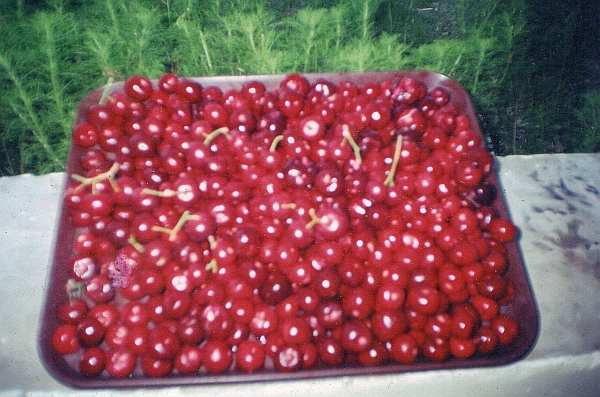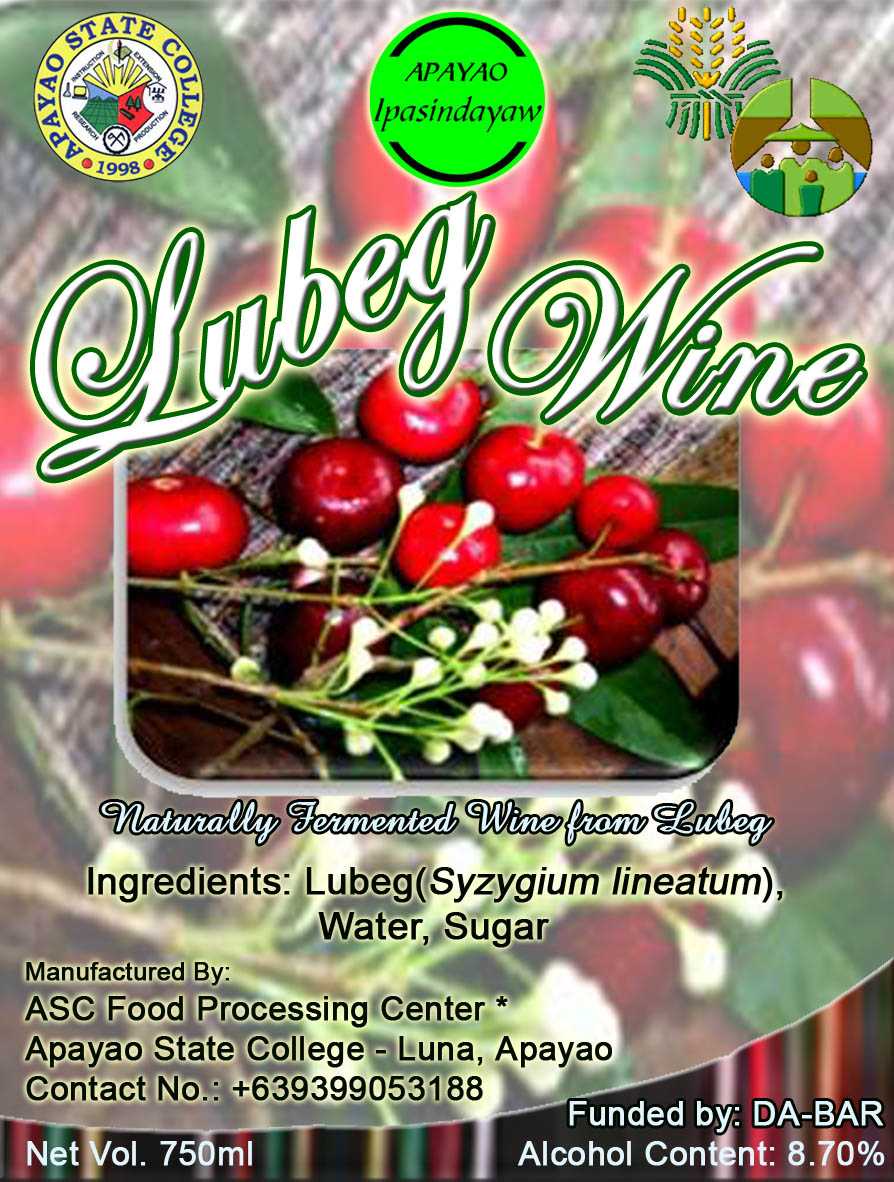A value addition budget of P1.5 million is being released by the Department of Agriculture (DA) for Apayao indigenous fruit “lubeg” (Philippine cherry) as its Vitamin C-rich wine and vinegar are well-liked based on initial market taste tests.

The Apayao State College (ASC) is boosting the commercial potential of lubeg through a DA-Bureau of Agricultural Research (BAR) project. Lubeg is a naturally-growing lesser known tree in the North particularly Pagudpud, Ilocos Norte, Cagayan, and Apayao.
“If we are helped, we may be able to sell lubeg wine and vinegar to SM. Those that tasted our wine and vinegar like them very much,” said Dr. Ronald Ocampo, ASC Research and Development chief.
The project will help the farmers in Apayao particularly the Pudtol Agrarian Reform Beneficiaries Cooperative (PARBC) who are from Brgy. Swan, Pudtol.
While main products are wine and vinegar for the liquid material, the lubeg fruit pulp is used as fillers in baked products like doughnut, cupcake, and custard cake. ASC will also reach out to farmers around its campus in Luna, Apayao.
BAR Director Nicomedes P. Eleazar said BAR is supporting product development and market exploration for indigenous crops that naturally grow in regions.
“It will provide ready livelihood to local residents. A 30-member women’s group have already gone through training on food processing and fruit-based baking using lubeg. Consumers also always look for new products that are nutritious. Lubeg must be among these products,“ said Eleazar.
BAR so far released half of the budget. It is awaiting the latest audited financial report in order to release the next P750,000.
Lubeg, with its fruit that has cherry deep red color when ripe and round shape, is found mostly in the Cagayan Valley. Forty percent of total production is in Apayao. There is an estimated 1,000 lubeg trees in Apayao.
Due to limited budget, ASC just used simple devices to prepare its products. These are a double burner and juicer.
With their limited capability, the women’s group just produces the lubeg goods when there is an order. This comes usually from other schools or offices.
With the lubeg vinegar’s selling price of P12 per 250-milliliter (ml) bottle, farmers are seen to enjoy satisfactory profit from it.
However, lubeg is a seasonal crop, usually bearing fruit only three months a year. This is from July to September, although its season is now extending to November to January fruiting. Climate change is suspected as the reason for this extended season.
Fruit basket
Apayao holds the potential as an ideal fruit basket in Luzon. Its climate is considered as Type 3 as that of Davao or other Mindanao provinces. This means it does not have a distinct rainy and dry season, making it a good location for fruit tree growing.
Most Apayao farmers are engaged primarily in cassava planting, according to Ocampo.
Lubeg will further give farmers and women more livelihood opportunities. Apayao farmers also plant rice, corn, coffee, root crops and vegetables. The province’s other fruits are lanzones, citrus, bananas and pineapples.
Cost & return
In a cost and return analysis, ASC showed that vinegar gives a net income of P744,000 at a production rate of 36,000 liters per year at P36 per liter. Direct material (lubeg fruit, white sugar, and yeast) reaches to P270,000.
Based on the study on the three processed products (vinegar, wine, jam/jelly), net profit will be biggest for wine at P1.641 million for the production of 36,000 liters. This will generate 48,000 bottles. Price is P70 per bottle for 750 milliliters (ml).
Manufacturing overhead for wine are packaging materials, P480,000 and bottling and pasteurization, P48,600. Fixed costs are building rental, P25,000 and interest to loan at 20 percent per annum, P12,000.
For jam-jelly, the production of 4,500 bottles per year at 350 ml will generate a net income of P77,900. This is at P70 per bottle for a total of 4,500 bottles or P315,000 sales per year.
Marketing
ASC is further eyeing other markets for lubeg products through partnerships. ASC has just presented the products’ potential commercial value in the Asian Conference on Multidisciplinary research in Higher Education at the Marriott Hotel on November 26-28, 2013. It was organized by the Philippine Association of Institutions for Research ( PAIR) and International Association of Multidisciplinary Research (IAMURE).
Lubeg may also need marketing assistance as a unique Apayao-origin product. It has already been exhibited at some exhibitions. The lubeg products joined in August this year BAR’s Techno Forum exhibition at the SM Megamall.
Cagayan actually has lubeg as its One Town One Product (OTOP), enabling lubeg to receive promotional assistance from the Department of Trade and Industry and the local government.
Nature help
Lubeg is also a tree that helps sustain the environment. First District of Cagayan Board Member Maria Olivia B. Pascual said the lubeg tree was made the official local government tree in Cagayan with its multiple purpose, according to a National Nutrition Council report. It helps fight hunger and malnutrition and serves as protector of the locality against climate change.
Scientifically called syzygium curanii, lubeg is also locally known as lipote and baligang.

Balayang, bignay
After a two-year period since 2012, the project is hoped to be extended by ASC. The value-adding work in lubeg is being lumped with two other potential commodities in Apayao. These are the seeded wild banana “balayang” and bignay kalabaw. Fruit extract (boiling 1:1 water to fruit ) from wild banana can make potential wine and vinegar products.
The balayang banana’s use as wine also has a commercial potential. Its alcohol content may be at 11 percent which is acceptable to general market.
The lubeg wine in 350 ml bottle was found by the Department of Science and Technology (DOST) to contain 8.7 percent alcohol. The bignay wine has 11 percent.
Initial nutritional impression indicated lubeg is rich in Vitamin C. A DOST report on the 200-ml lubeg jam showed it has 0.23 percent ash; 81.12 percent carbohydrate, 0.89 percent crude fat; 0.63 percent crude protein, and 335 kilocalories. ASC will further engage in a phytochemical study for lubeg.
Fresh fruit production of lubeg in Apayao is estimated at 100 metric tons per year.
###
For any questions, kindly contact Dr. Ronald Ocampo, 0939-905-3188; for interview requests, Ms. Analiza C. Mendoza, 0921-338-3816, 0916-266-6604.
